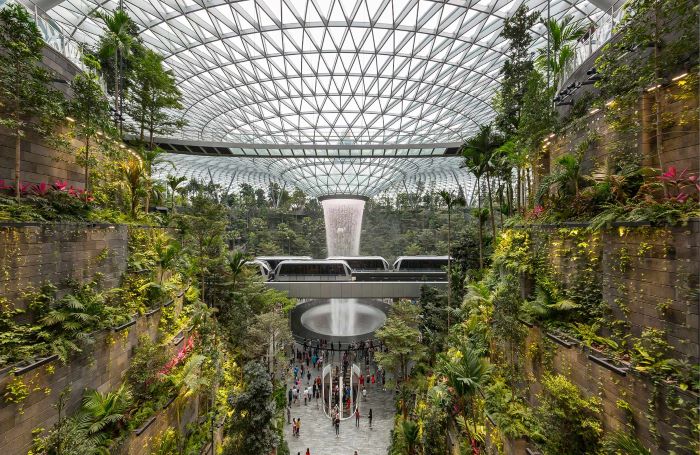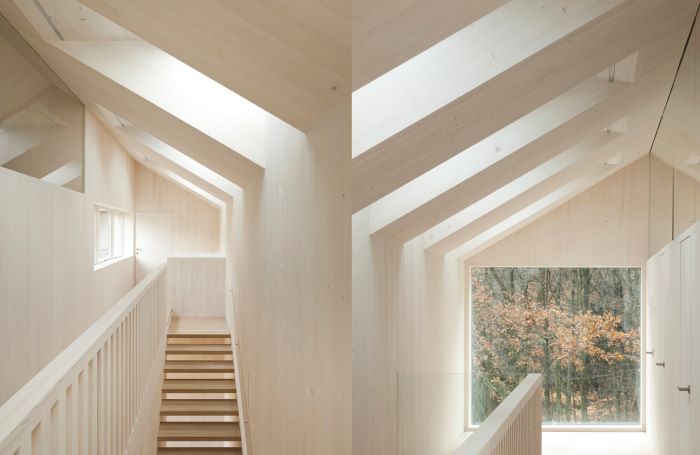My name is Josh Foster and I am a Part 2 Architectural Assistant at , a medium sized practice in the West Midlands, having completed my Undergraduate and Masters Degrees at De Montfort University in Leicester. I am also the founder of The Architecture Student Blog, a platform which provides young architects the opportunity to share and showcase their work, allowing it to go beyond the studio walls.
Whilst wellbeing and its relationship with architecture is a common topic for discussion, particularly that of mental health, our responsibility as architects to promote and design environments that promote well-being is not. Scientific research has demonstrated that architecture can and does influence the health and well-being of the inhabitants within it, known formally as evidence-based design. This area of research has over 650 studies in peer reviewed journals establishing how a variety of architectural features can impact the human psyche. Acknowledging architecture's influence on health and well-being is a significant step in the right direction. However, furthering this understanding to realise the processes that can make a positive impact is essential to increasing our knowledge of the built environment.
Science Behind the Theory
As our understanding of the human body and its internal mechanisms continues to grow, it is now possible to prove the body's own healing capacity through the use and release of neurochemicals from transmitters in the brain. Through this process the body can reduce pain, enhance mood, calm emotion and even improve its immune response (Sternberg 2013).
Spaces are a medium that can stimulate the brain both positively and negatively. We as humans are complex beings who interpret spaces through sounds, smells, appearance, light, colour and many other stimuli. It is through these sensory experiences that inhabitants can be affected by their environment. Yet these characteristics can often be overlooked within contemporary architectural design. If we as architects can introduce stimuli that increase the release of neurochemicals from the brain we can thus have a sub-conscious influence on the wellbeing of the end user and those who inhabit our designs.
When broken down into individual elements the philosophy is simple.
Architectural Stimulus > Psychological Response > Improved Health & Well-being
Implementing the Methodologies
Whilst the evidence to support the theory is readily available, it is paramount that we understand the methodologies that reinforce this philosophy. This is so the next time you're approaching a design you can focus your attention on architectural features that could make a significant impact to the building's success when in use. You may find that you implement these methodologies as a matter of course but perhaps not fully appreciating the full extent of their influence.
Biophilia
The hypothesis of Biophilia states that humans as a species respond positively to forms of nature, their processes and patterns. The introduction of natural scenes elicits positive mental stimulation which can profoundly influence and reduce stress levels. Not only this but research into recording brain electrical activity has also shown that individuals are more relaxed when exposed to nature (Ulrich 1981).
Biophilic design practices can be broken down into the three principal systems:
- Physical Biophilia - Physical insertion of natural vegetation within design
- Biomorphism - Visual representations of naturally occurring shapes reminiscent of nature and its living organisms
- Biomimicry - Imitation of natural ecosystems and processes within design

Healing Gardens
Linked very closely to the hypothesis of Biophilic design is the understanding of healing gardens. There is growing evidence to suggest that interaction with gardens can offer both psychological and emotional benefits as well as the social benefits that can be achieved through interactions with other gardeners . Cooper-Marcus and Barnes (1995) in their publication Healing Gardens found that gardens can offer support during recovery from stress related illnesses as well as improving mood.
This methodology touches more on the side of mental health and goes someway in aiding the ageing population, another hot topic in the United Kingdom. If we can provide facilities that are social instigators i.e. a garden or allotment design, this can encourage people to congregate and socialise.

Natural Daylight
This technique is one that is frequently used in design and for good reason. Research has proven that exposure to natural daylight can increase the levels of Serotonin and Melatonin released by the brain. Serotonin being a vital component in the controlling of our mood and emotions and Melatonin being responsible for regulating our sleep patterns. Studies have shown an increased exposure to natural daylight can increase levels of Serotonin and Melatonin and in turn have significant improvements to our mood and happiness (Boubekri 2008).
So whilst architects are aware that exposure to daylight is a nicety, it is also a key component in influencing the health and wellbeing of the end user of our built environment.

Natural Ventilation
Another popular methodology is natural ventilation. The principle of natural ventilation is very simple: if a building can expel the existing stale, polluted air, it aids in preventing the passing of bacteria and infections. Now often the discussion regarding ventilation is Natural vs Mechanical (air conditioning) with both deemed to perform the same job. However, evidence has shown that in a hospital setting, patients who were cared for in isolation with a mechanical ventilation system were at a higher risk of infection when compared to patients in a 1950's hospital vented through natural means e.g. high ceilings, and multiple large openings (Escombe et al. 2007). This evidence indicates that natural ventilation offers a more sanitary environment and therefore supports the physiological well-being of the space鈥檚 users more effectively than mechanical ventilation. Therefore, Natural Ventilation plays more to the physiological well-being of its users by offering spaces that are more sanitary.
When rationalised in this manner it is clear to see how design can impact the health and wellbeing of the inhabitants within it, particularly psychologically which is becoming ever more prominent within modern society. This brief synopsis only scratches the surface of what is possible through design and how our work can affect the human body.
But just remember the next time you are designing, what could you do to improve the health and wellbeing of your end user?
Josh Foster's article was submitted as part of 澳门王中王 Future Architects; our network and community for future and emerging architects, designed to support, inspire and provide a voice as you transition from study to practice. View our resources




